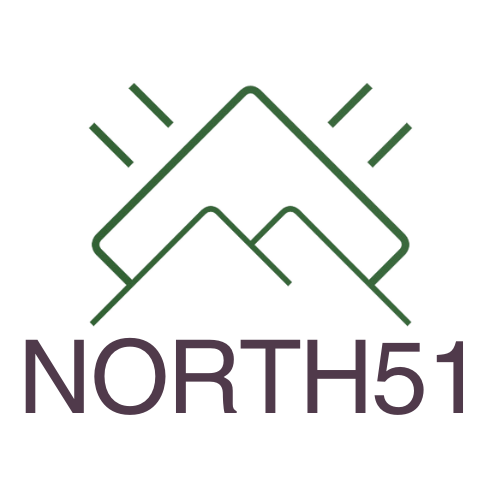GEOFESTO
Where is the question, but how? Geospatial is at a tipping point; this GEOFESTO is a philosophy for our community’s growth.
This is a living document. Expect changes.
Every headline now has a latitude and longitude. Wildfires darken skies half a continent away, supply chains reroute in hours, and satellite images expose current events before diplomats can draft statements. In this high-velocity world, whoever understands “where” outpaces the competition, protects communities, and shapes policy. Geospatial is no longer a specialist’s hobby; it is a critical input to decision-making. This document, a “GEOFESTO*,” lays out the principles and emerging trends that let practitioners ride the wave instead of drowning beneath it.
The Calgary Eleven: Kurtis Broda**, Jon Neufeld, Tammy Peterson, Tee Barr, Ben Tuttle, Cade Justad-Sandberg, Kyle Ryan, Sarah Pryor, Andrew House, Will Cadell, Sam Rondeel
Photo by philippe spitalier on Unsplash
Here is our call to action for our fellow geospatial practitioners.
1. Educate to make spatial literacy universal - Geo isn’t a specialty but a core way of reasoning about finance, climate, supply chains, and society. Geospatial practitioners need to educate others to enhance decision-making.
2. Choose collaboration over silos - Walled gardens and traditionally siloed GIS offices waste insight, while teams that communicate openly are effective. The traditional GIS department needs to integrate into the wider organization.
3. Commit to open standards - Open data and model standards invite idea collisions, turbo‑charge scale, and unleash AI innovation the moment a new sensor comes online.
4. Geospatial as an approach, not a solution - Jargon‑laden solutions alienate would‑be users. Lead with plain‑language workflows that hide complexity and spotlight outcomes.
5. Obsess over outcomes - Measure success by problems solved, rather than the amount of geospatial tech used.
Why do these commitments matter? Geospatial in 2025 evolves at breakneck speed, and practitioners who ground their work in these five principles navigate the turbulence instead of getting caught in it. The next section charts the forces already reshaping our craft—trends that, over the next five years, will test and reward everyone who lives the GEOFESTO.
Spatial Information is Becoming More Important for Business Intelligence Because of a Massive Increase in Location Data
Geography is not a niche skill but a foundational way of reasoning about the world.
Smartphones, drones, and devices stream ever-increasing amounts of location data. Organizations that weave spatial thinking derived from this data into strategy can see patterns rivals miss. Leaders now realise that every KPI hides a “where,” and when teams map those hidden relationships, they cut blind spots and find new value. Spatial analysis no longer sits on the fringe; it powers business intelligence. And humanity's biggest challenges are spatially located. From climate change to geopolitics, only by understanding where can we understand the critical path forward.
From Analysis‑Ready to Decision‑Ready Data
The geospatial community has spent a decade celebrating analysis ready data, yet end‑users still wrestle with last‑mile analytics.
Decision ready data will close that gap. That means distilling insights and context so end-users can go straight from data to action. The concept builds on efforts in remote sensing where imagery is pre-processed as Analysis-Ready Data; now we’re taking it further across the geospatial field. Think of disaster managers getting a flood impact map with population and economic loss estimates, instead of just satellite photos. Driving this trend is the need for speed and clarity. In a fast-paced world, few have time to wrangle data or interpret complex charts.
Collaboration Beats Silos
Walled gardens hinder fusion; open standards catalyze idea collisions.
The geospatial field has long suffered from data silos caused by agencies and companies guarding data or working in isolation. That’s changing fast, out of both necessity and opportunity. Complex problems like pandemics and climate risks don’t respect organizational boundaries, and solving them requires pooling expertise and datasets. When GIS teams operate in silos, their impact is limited. Open collaboration multiplies the value of spatial data, such as STAC for sharing imagery. This trend is gaining momentum now thanks to cloud infrastructure and APIs that make data exchange easier, plus a generational change in mindset toward openness. The payoff is huge: better decision-making, less duplication, and the ability to tackle big challenges together.
Designing for an AI‑First Era
Do we retrofit AI into legacy toolchains or invent fresh, prompt‑driven experiences that bypass traditional GIS GUIs - the start of geospatial information?
The traditional GIS (Geographic Information System) has been a powerhouse, but it’s historically tied to complex software interfaces and expert operators. In 2025, we are looking at a radically new paradigm of AI-first geospatial workflows. Large language models and other AI can now interpret natural language and generate maps or analyses on the fly. This means a researcher or city official might simply describe a problem or ask a question, and the AI-powered system will handle the GIS tasks under the hood such as data retrieval, analysis, and visualization without the user clicking through menus or writing code.
There’s also a democratizing impulse: to make spatial analysis accessible to anyone who needs it, not just those with specialized training. An AI-first workflow lowers the barrier so a hydrologist, epidemiologist, or journalist can get spatial insights without being a GIS guru. This doesn’t spell the end of the GIS professional, rather it augments experts’ capabilities and frees them from rote tasks. It’s GIS “after the GUI,” where the heavy lifting and even some expert reasoning)is handled by AI agents. Imagine vastly shorter analysis cycles and increased innovation as more people can play with geospatial questions.
Further out, many experts, such as Dr. Fei-Fei Li, believe that spatial AI is the next frontier. While LLMs dominate today, models that grasp context and act in the spatial domain could redefine the profession. And geospatial practitioners are poised to lead that charge.
Geopolitics of Pixels: Sovereignty, Security, and the New Spatial Order
Platform sovereignty, export controls, and the slide toward nationalized constellations. This trend is a direct threat to open collaboration and breaking down of silos.
Geospatial technology is deeply entwined with questions of national sovereignty and security.
During Russia’s 2022 invasion of Ukraine, ubiquitous satellite imagery empowered a smaller nation and the global public to hold a superpower to account, in what became the most “documented” conflict in history. Nations are taking note, and are asserting control over mapping within their borders. Many countries worry that unfettered open data could expose critical infrastructure or strategic vulnerabilities, prompting debates about limiting certain datasets.
We are entering a new spatial order where owning your satellites, your mapping platforms, and your spatial data repositories is seen as vital as owning your land. Even private companies like map providers find themselves navigating international sensitivities, such as differing border representations and data localization laws. In this landscape, “pixels” (satellite images, map tiles) carry diplomatic weight. Control over them means control over narratives and strategic insights.
Conclusion
Geospatial’s moment is now: location data sits at the heart of decision and AI rips away old interface barriers. And sovereign pixels redraw power maps. The GEOFESTO calls us to meet that moment. To think spatially by default, share before siloing, codify open standards, speak outcomes not acronyms, and measure impact in lives improved, risks reduced, forests saved. If practitioners, vendors, academics, and policymakers embrace these principles, we don’t merely keep pace with change; we shape it and help the world move forward.
*Paying homage to our community’s insistence on adding the prefix “geo” to almost any word. Note that Sparkgeo cleverly uses a suffix, which is quite different.
**Special thanks to Kurtis Broda for assembling our notes.


